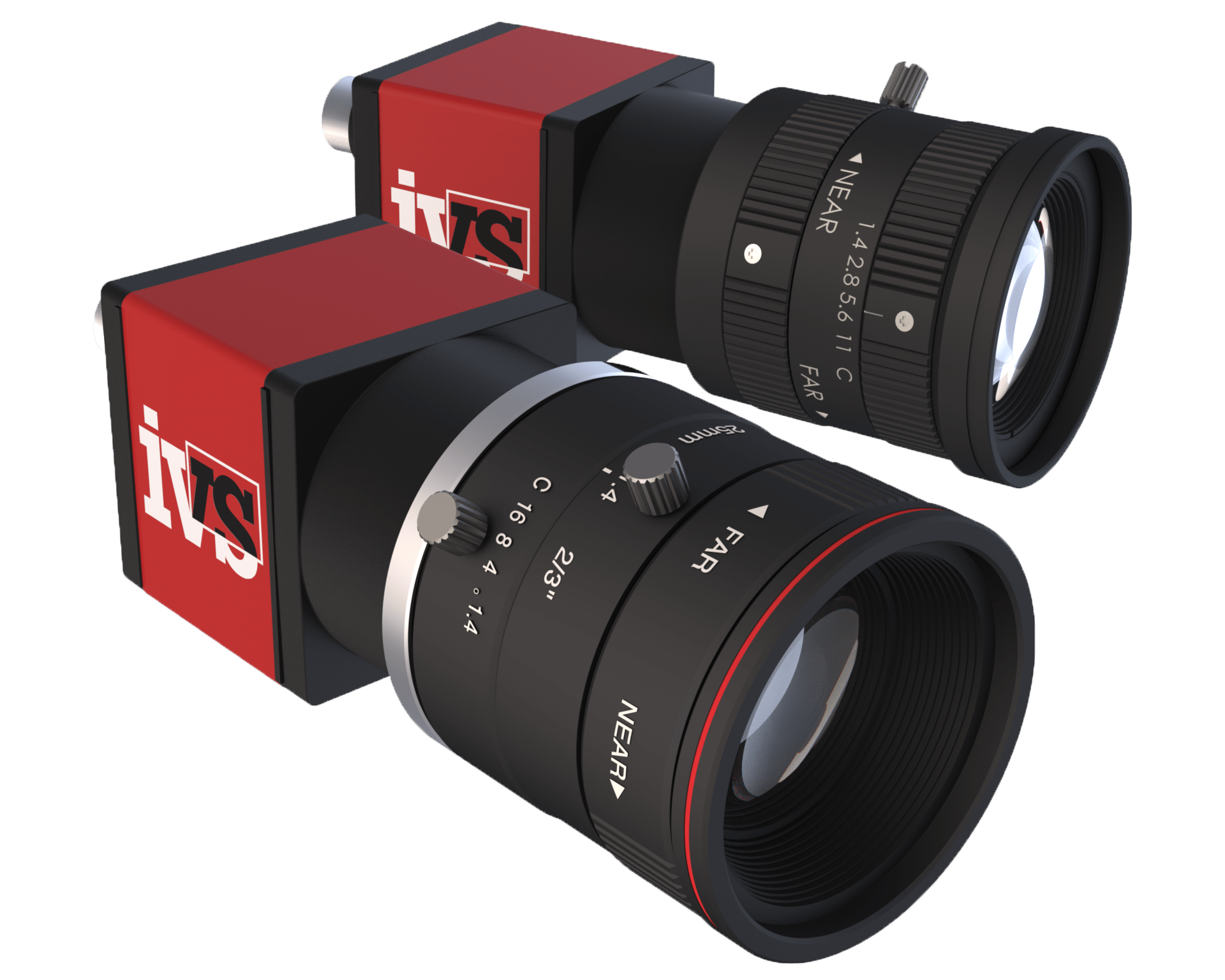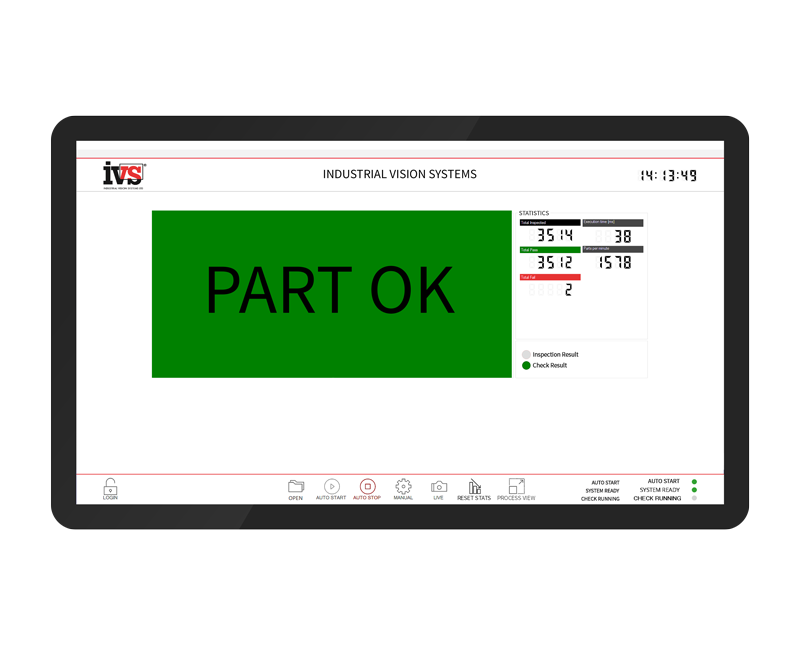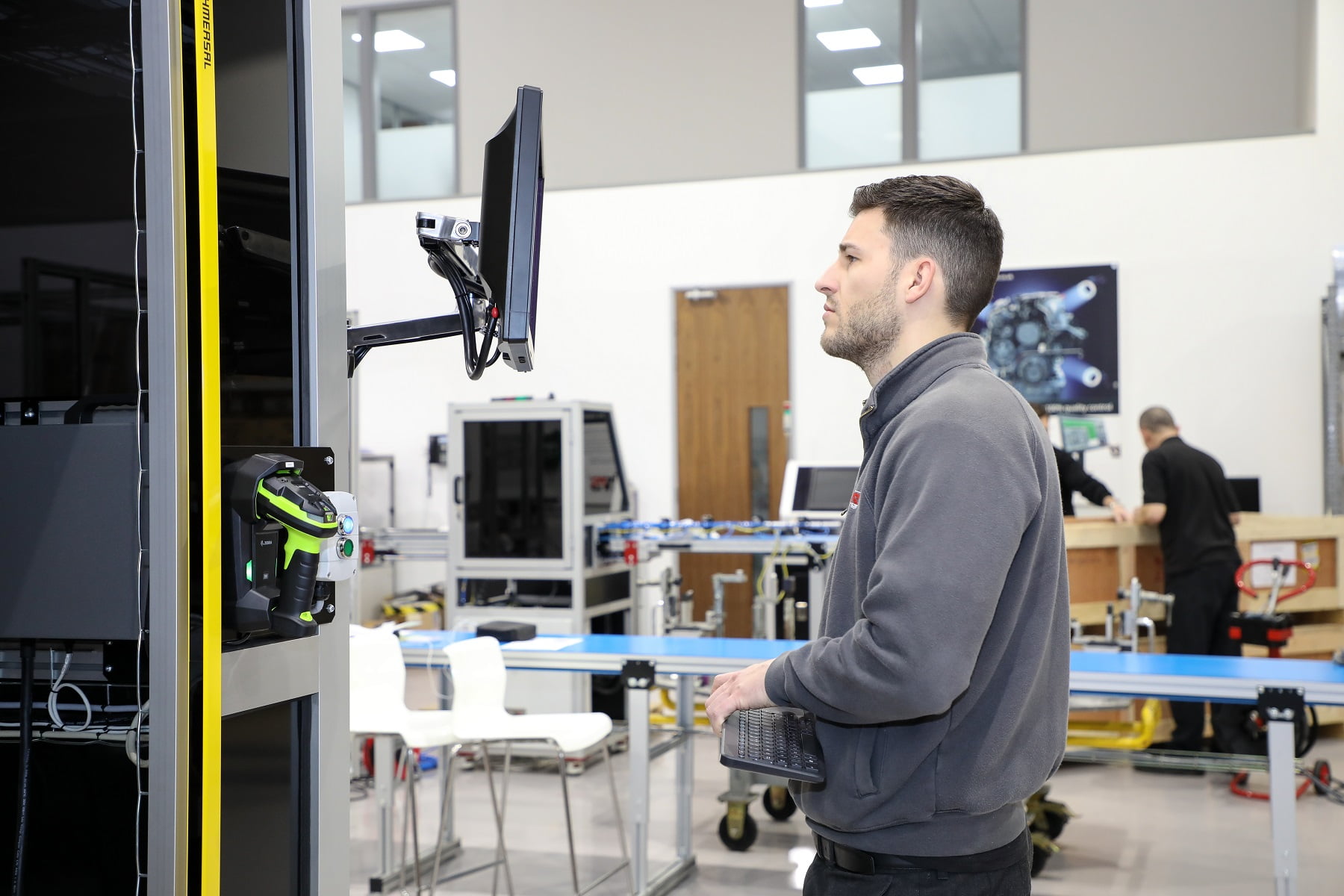Vision System Cameras
Vision system cameras for industry. Our industrial vision cameras are designed for inspection, identification, measurement and guidance.
Vision system cameras.
Designed with ease-of-use in mind, combined with fast deployment and low on-going cost of ownership. Powered by the standard IVS software suites our vision system cameras are designed for all major quality inspection and guidance applications.
IVS Vision system cameras perform inspection at speed, linking directly to your production line and factory information, to deliver both immediate inspection and production data. Instant factory information at your fingertips. Find and fix manufacturing issues quickly with IVS vision cameras.

Why you need our vision system cameras
Discover the benefits of IVS providing your vision system camera
Powerful Inspection
Our vision inspection cameras are powerful inspection tools. Compact design for easy installation in all production line conditions, backed by an extensive quality inspection toolbox.

Full Range of Resolution
Covering an extensive range of resolutions, our IVS® easy-to-use vision system cameras allow quick development of even complex vision inspection. From VGA up to 24MP image size.
Modular Camera Design
Adapt your production as your requirements change. The same compact design is available across all product types. Quick connections in gigabit ethernet and USB allow speedy integration.
Our Vision System Camera Products
Explore some of the key features and benefits of using IVS vision system cameras

High Performance Machine Vision Cameras
Experience a new range of digital vision system cameras providing more power, higher speed and built for industrial environments. Versatile, powerful and easy-to-use. High speed inspection combined with powerful 24-bit colour processing provides users with unparalleled usability.
Utilise the latest machine vision algorithms. Formidable firmware, combined with leading price and performance for vision system applications.
Vision System Components
To complement our vision system cameras, we provide a full range of machine vision components for the installation of vision systems onto existing lines and cells across the manufacturing process. Expertly designed for ease of integration.
Optics, illumination, cables, acquisition modules, industrial PCs and controllers. We provide state-of-the-art vision system solutions, backed by extensive expertise, knowledge and customer support.
Vision System Software
IVS vision engineering has developed thousands of complex machine vision solutions to complement our vision system cameras. We design and commission the required vision software for your application, including all variants and part changes requiring automated inspection.
Our software solutions are based on standard and universally applicable application software for industrial manufacturing and image processing. Our systems offer immediate deployment on manufacturing lines, machine vision can be set-up, deployed and maintained by your engineers – previous experience of vision technology is not required.
Integration and Commissioning
IVS provides full integration, commissioning and testing of the vision system on your behalf. Our engineers can deploy and support the vision system at your facility, we also provide FAT and SAT support, plus on-going support and maintenance of the machine vision system.
Remove risk by using our experienced engineering team. Our clients don’t need to have any working knowledge of machine vision or vision systems, they just need to tell us what they wish to achieve and where the system needs to be installed, and we’ll take care of the rest.
Interested in Vision System Cameras?
Get in touch today so we can answer and questions you have regarding our vision system camera solutions. See how they can save you money, protect your brand and increase your yield.
Send us a message and we will respond as soon as possible.
Have a Question? Get in touch
More about vision system cameras
Types of sensors in vision system cameras
Vision sensors within vision system cameras use industrial image processing to analyse images captured and thus make decisions on process control based on the interpretation of the data. Typically, these application areas cover presence checking, optical character recognition, optical character verification, print inspection, measurement, surface checking, 2D and 3D code reading, robot guidance and location feedback. Following processing the vision system camera communicates with the production line to give results and statistical data.
Solid-state sensors are the electronic eyes of today’s cameras. The intensity of the incident light is converted into a charge or a digital value that is subsequently processed depending on the application. Basically, image sensors are categorized according to:
- The geometrical arrangement of the light-sensitive elements (pixels) in line or matrix sensors.
- The mode of operations and manufacturing technology in Charge Coupled Device (CCD) and Complementary Metal Oxide Semiconductor (CMOS) sensors.
Matrix sensors: Matrix sensors like common digital cameras for the consumer market, acquire an image consisting of several lines and columns during a single exposure time. This is the most commonly used type in machine vision by far in a vision system camera.
Line sensors: Line sensors acquire only one line at a time. In many line-scan camera applications, lines captured in sequence are assembled into a rectangular image.
CCD sensors: CCD sensors are continuing to decline in use for industrial image processing; the first specimens were developed in the early 1970s from analog bucket-brigade devices and quickly replaced the camera tubes. When they started conquering the consumer market in camcorders, the CCD sensors had reached an attractive price level accelerating their use in machine vision.
CMOS sensors: These are now the dominant sensors used in vision system cameras today. Research into CMOS sensors got impetus in the early 1990s. In 1993 the Jet Propulsion Laboratory (Pasadena, CA, U.S.A.) provided the US space agency NASA with a sensor having a resolution of 128 x 128 pixels being followed by the first one-megapixel sensor only three years later. Unlike the manufacture of CCD sensors, the manufacture of CMOS chips and sensors is based on wide-spread standard technology. Therefore, the production of CMOS sensors is in principle more cost-efficient. More important for the sensor properties are the different ways in which image information is read out within the vision system camera.
Basically all solid-state sensors operate according to the same principle:
- The incident light in the form of a stream of photons generates free electrons in the light-sensitive part of the solid-state crystal.
- The generated electrons are collected over a specific period of time, the exposure or integration time.
- After the exposure time, the acquired charge is transferred pixel by pixel to the converter stage in the CCD sensor.
- Finally, the acquired charge is converted into a proportional voltage that can be converted into a numeric value by an analog–digital converter. CCD and CMOS sensors use photodiodes to convert incident photons into charge and collect them in the potential well. There the charge is stored during exposure time. The storage capacity depends primarily on the geometric pixel size and the build-up of the solid-state structures. It is denoted as full well capacity of the pixel in electrons (e ). The rule of thumb for all sensors is important: the larger the pixel, the larger the full well capacity and thus the attainable range of dynamics and contrast.
A fundamental difference between CCD and CMOS sensors is in the read-out of the charges of the individual pixels. This has a significant effect on the sensor properties within the vision system camera.


